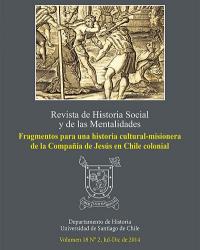THE ISOMORPHISM OF JESUIT LIBRARIES (XVI-XVIII CENTURIES)
DOI:
https://doi.org/10.35588/1c97vx53Keywords:
Jesuit libraries, Cartography, IsomorphismAbstract
n order to show the isomorphic nature of jesuit libraries, the author did for the first time the decoding and transcription of the old handwritten inventories of the Jesuit libraries from the Santiago, Concepción and Castro colleges found in the “temporalidades jesuitas” at the National Archive of Chile (Archivo Nacional de Chile, ANCH). To understand the structure and development of libraries in the Society of Jesus, some key concepts (scriptor-auctor/inventory- catalogue) are presented and explained in the text including a reference to the history of the different forms of cataloguing elaborated by the Order. A cartography of the different libraries that could be found in all the Jesuit colleges and houses, their organization and the role of the librarian in relation to the access to books are presented. The concept of isomorphism, that in mathematics implies a similitude relationship between two objects and within group theory permits to deduce the properties of one group from the properties of the other, is applied to the ensemble of libraries. This notion was used as the tool to show through comparison of authors, that the content of inventories and libraries catalogues from eight Jesuit colleges elaborated during the x VIII Century, share the presence of almost 300 authors, in different subjects. The isomorphism of the Jesuit libraries is de representation of an experience in common, a shared and transmissible tradition and, finally, libraries become a constitutive element of the collective memory of the Order.
Downloads
Downloads
Submitted
2015-03-10Published
Versions
- 2024-12-12 (2)
- (1)
Issue
Section
License
Copyright (c) 2024 Revista de Historia Social y de las Mentalidades

This work is licensed under a Creative Commons Attribution 4.0 International License.













